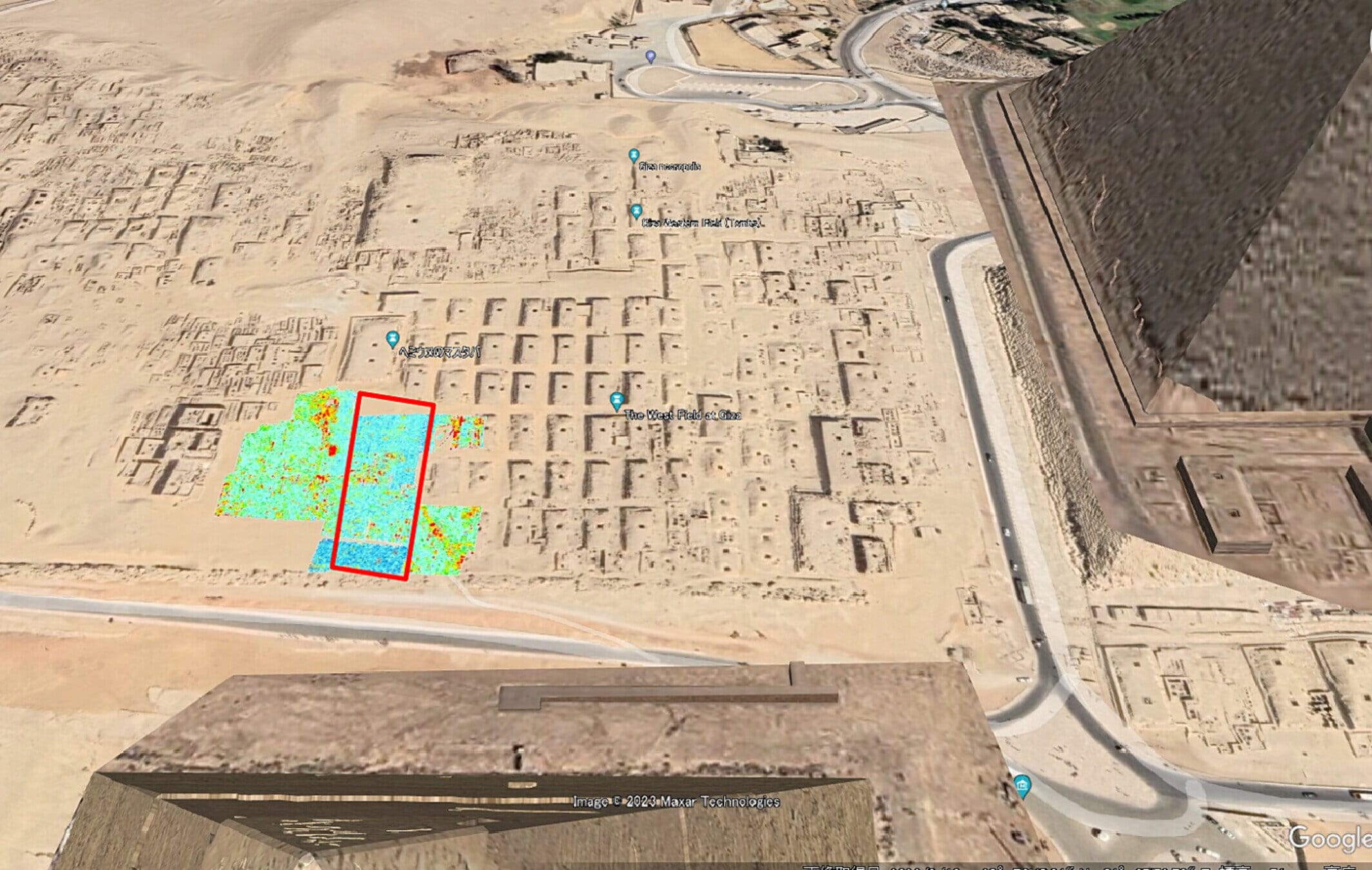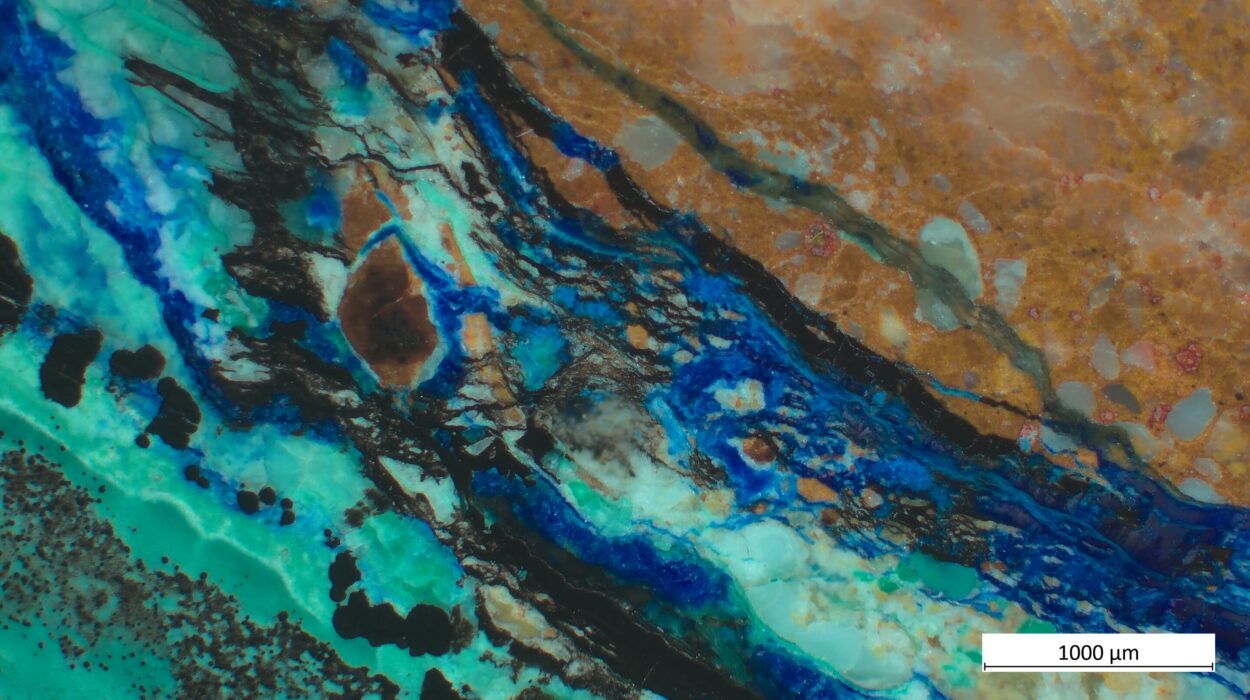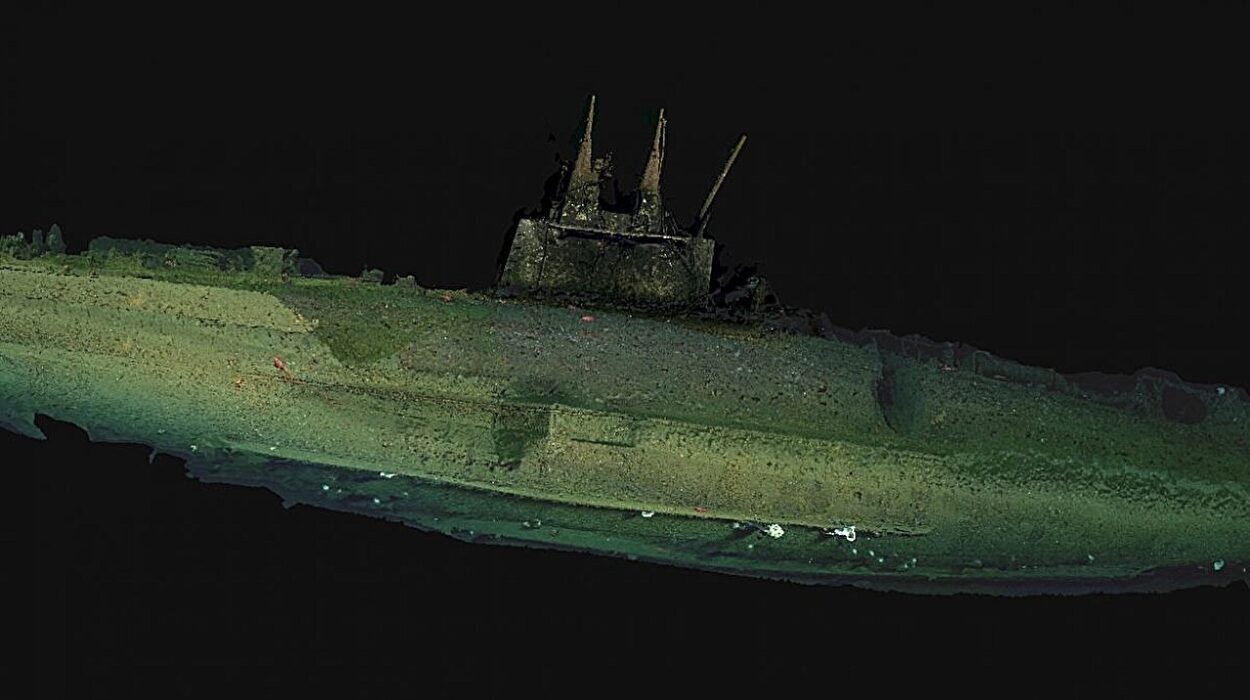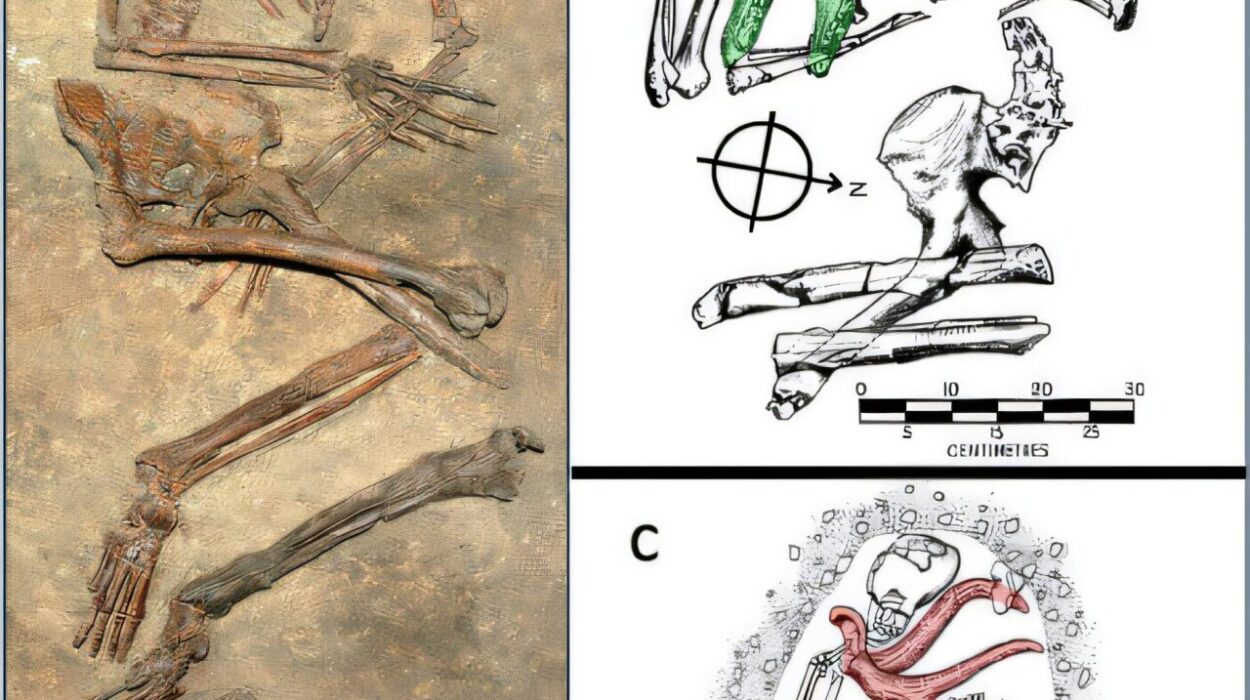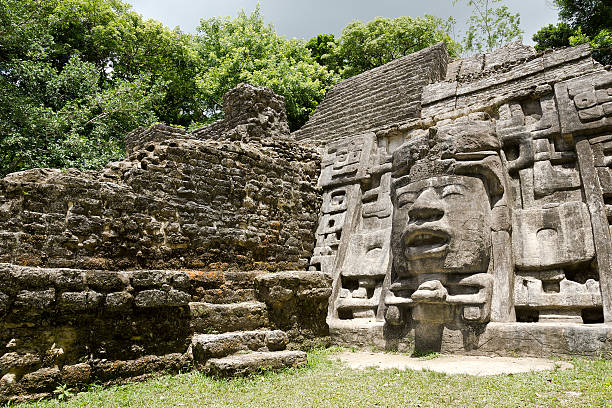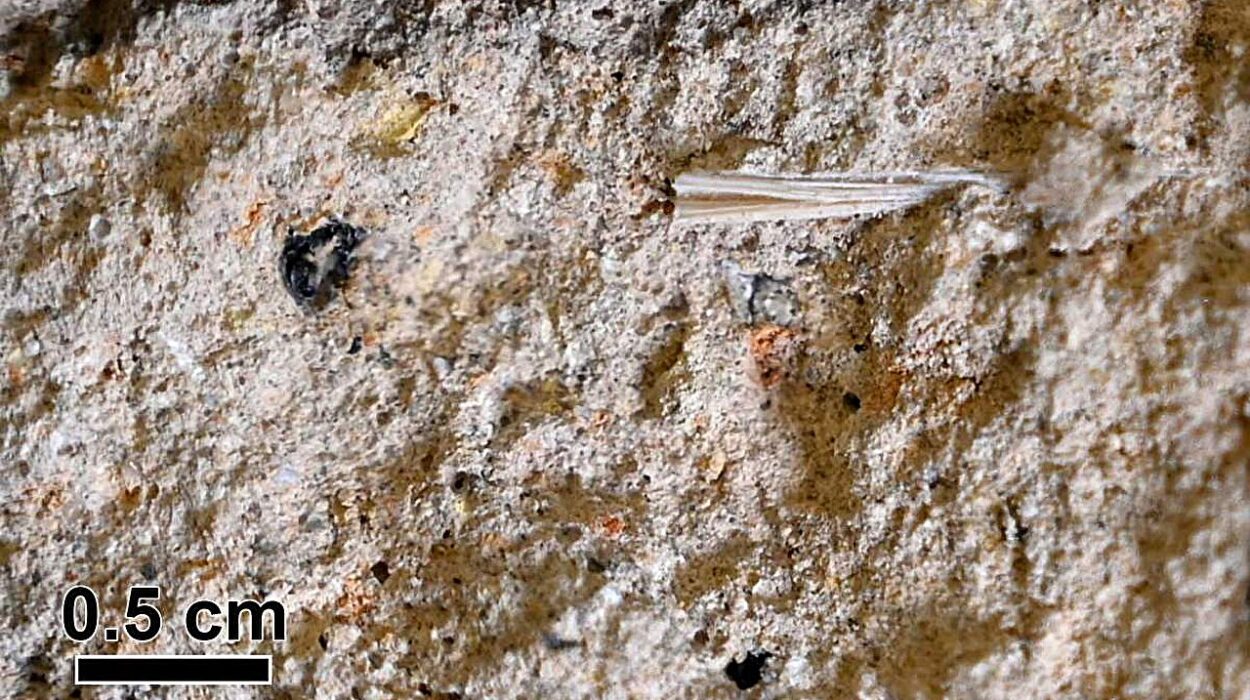Under the hot Egyptian sun, the Western Cemetery near the Great Pyramid of Giza rests in silence, its surface flat and unremarkable. For centuries, this ground has remained untouched—overshadowed, quite literally, by the towering majesty of the pyramid itself and the tombs that surround it. It is a place that seems to say everything there is to say about ancient Egypt has already been said.
But the sands of Giza are not as still as they seem. Recently, a team of Japanese and Egyptian researchers, equipped with state-of-the-art tools and a deep reverence for history, listened closely to the earth—and it spoke back. What they found beneath the Western Cemetery is not just an archaeological curiosity. It is a mystery carved in silence, beckoning us to question what we truly know about the people who once ruled the Nile.
Anomaly in the Shadows of Giants
The new study, published in the journal Archaeological Prospection, reports the discovery of an underground “anomaly” near the iconic Giza pyramid complex. Led by a multi-institutional team of experts in archaeology and geophysics, the research combined two advanced subsurface imaging techniques—Ground-Penetrating Radar (GPR) and Electrical Resistivity Tomography (ERT)—to scan the unassuming area.
These are not speculative tools; they are precision instruments capable of revealing what lies hidden beneath layers of sediment, sand, and time. The scientists focused their attention on a patch of land that had remained largely unexplored, even though it lies just a stone’s throw from one of the most studied ancient monuments on Earth.
What the GPR and ERT data revealed was startling: buried beneath this unmarked section of land are what appear to be two distinct man-made structures, completely invisible to the naked eye.
One is shallow and L-shaped, likely backfilled with sand at some point after its use. The other plunges deeper into the earth—ten meters at its lowest point—its form too regular, too geometrically precise, to be anything but the work of human hands. These structures, the researchers suggest, could be more than just architectural remnants. They could represent a new piece of Egypt’s grand, unfinished puzzle.
Echoes of the Builders
The Western Cemetery itself is no stranger to archaeological attention. For decades, scholars have studied the mastabas that populate it—flat-roofed, rectangular tombs built for nobles, priests, and high-ranking officials during Egypt’s Old Kingdom. These structures tell us much about the society that built the pyramids: their rituals, social hierarchies, and engineering capabilities.
But the newly discovered structures lie outside the pattern. They exist in a part of the cemetery that, until now, was thought to be empty. Their positioning, depth, and construction suggest they were not random extensions or later additions, but part of a deliberate design—perhaps a hidden component of the cemetery’s original layout.
The L-shaped shallow structure, buried just two meters below the surface, measures around 10 by 15 meters. According to the team’s interpretation, it may have served as a support platform or foundation, possibly used during the construction or maintenance of the deeper chamber. The deeper anomaly, which spans approximately 10 square meters, sits between five and ten meters underground—quiet, concealed, and potentially untouched for thousands of years.
Man-Made Mystery in Stone and Silence
What truly sets this discovery apart is not just its proximity to the Great Pyramid, but the fact that its shape and material density differ significantly from the surrounding geological layers. Nature does not often produce clean geometric forms buried neatly in the desert. The anomaly’s characteristics point decisively to a human origin.
And yet, for all we now know, we know almost nothing.
Is the deeper structure a lost tomb, sealed long before even Herodotus wandered through Egypt’s ruins? Could it be a hidden cache of funerary artifacts, a ceremonial chamber, or even a secret construction pit linked to the building of the pyramid itself? Every possibility tugs at the imagination and teases the boundaries between myth and science.
The researchers have not yet excavated the site. To do so would be a delicate and time-consuming process, requiring immense care to preserve whatever lies below. But even without a single stone unearthed, the implications are profound. The Giza plateau may still be guarding secrets, cloaked beneath seemingly ordinary sands.
Technology Meets Ancient Wonder
The beauty of this discovery lies in its method as much as its result. Using ground-penetrating radar, scientists sent high-frequency radio waves into the earth, measuring the echoes that bounced back. Variations in those signals allowed them to detect voids or solid objects buried underground. Electrical resistivity tomography, meanwhile, measured how electrical currents passed through the soil, revealing density differences that indicated the presence of non-natural materials.
Together, these tools created a kind of X-ray of the desert, allowing researchers to “see” beneath the surface without disturbing it.
This is the new frontier of archaeology—non-invasive exploration—where technology allows us to tiptoe across the fabric of time without tearing it. It respects the sanctity of ancient sites while opening new windows into the past. And in places like Giza, where even the sand breathes history, such methods are essential.
A Civilization Still Speaking
The pyramids are not mute. Every block, every pathway, every hidden corridor is part of a grand architectural sentence written by a civilization that mastered not only engineering but storytelling in stone. And every new discovery—like the one beneath the Western Cemetery—is another word, another syllable in the story Egypt is still telling us.
It’s easy to think of ancient Egypt as a finished tale, its secrets already cataloged in dusty volumes. But that’s an illusion. Giza, like all great ancient sites, is not a relic. It’s a conversation.
This new anomaly may prove to be a tomb, or a tool, or something no one has yet imagined. But whatever it is, it reminds us that Egypt is far from done revealing its truths.
The Call for Cautious Curiosity
The research team has urged for careful excavation of the site. The sands may shift, but their contents must be approached with precision and patience. Excavating near the Great Pyramid is not only an archaeological challenge but a spiritual responsibility. Every dig in Giza peels back time—and with it, the dignity of the lives that came before.
Should the deeper structure prove to be a burial chamber, it could offer unprecedented insights into Old Kingdom burial practices, social stratification, or even the techniques used to build the nearby pyramids. If it’s a storage facility or construction feature, it may help unravel the logistical genius behind one of the world’s most enduring architectural feats.
Either way, the site is a time capsule—and one that, so far, remains sealed.
A Future Buried in the Past
History rarely gives up its secrets easily. But sometimes, it offers hints. A bump beneath the sand. A frequency shift in a radio wave. A flicker on a screen in a laboratory thousands of miles away.
This is one of those moments.
The team from Japan and Egypt has not just discovered an anomaly—they’ve reignited the mystery of Giza. In doing so, they remind us that even after 4,500 years, the ground near the Great Pyramid is not done speaking. It is not done hiding. And it is certainly not done inspiring.
In a world often obsessed with the future, this discovery calls us back to the past—not to escape it, but to understand how the brilliance of human ambition, long buried in stone and sand, still shapes the world we build today.
Reference: Motoyuki Sato et al, GPR and ERT Exploration in the Western Cemetery in Giza, Egypt, Archaeological Prospection (2024). DOI: 10.1002/arp.1940
